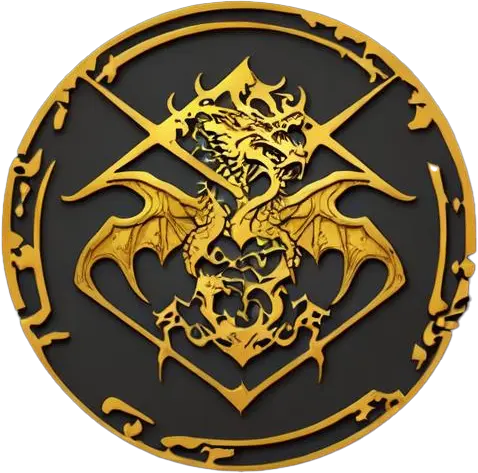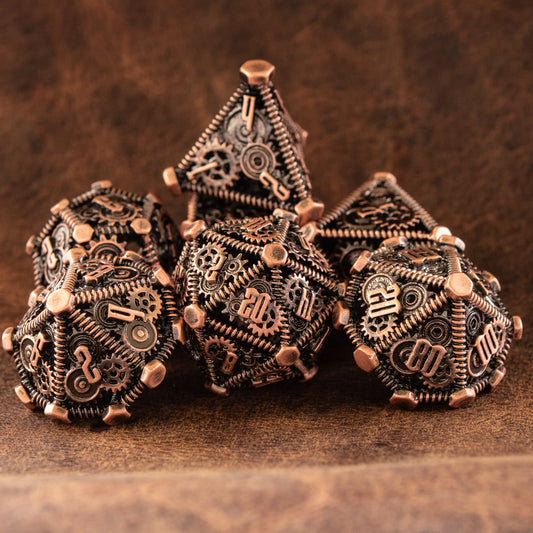D&D Difference Between Demon and Devil: An In-Depth Guide
Share
D&D Difference Between Demon and Devil: An In-Depth Guide
Introduction
In the vast and intricate world of Dungeons & Dragons, understanding the differences between demons and devils is crucial for both players and dungeon masters. While both are inherently evil, their distinct characteristics and behaviors can significantly impact gameplay. Knowing the differences between these two fiendish entities can enhance storytelling, strategy, and overall enjoyment of the game.
Overview of Demons and Devils
Introduction to Demons
Demons are chaotic entities originating from the Abyss, a plane of pure chaos and evil. They are manifestations of rage and destruction, thriving on mayhem and bloodshed. The Abyss is a hellish and ever-changing environment, rumored to have around 666 layers, each more twisted and dangerous than the last. Demons are born from this chaos, and their existence is a testament to the raw, untamed power of the Abyss.
Introduction to Devils
Devils, on the other hand, hail from the Nine Hells, a plane characterized by its strict hierarchy and order. These fiends are the embodiment of lawful evil, meticulously planning their actions and strategies. The Nine Hells consist of nine distinct layers, each ruled by powerful archdevils who serve the ultimate leader, Asmodeus. Unlike the chaotic nature of demons, devils are methodical and disciplined, using their cunning and intelligence to achieve their malevolent goals.
Alignments and Languages
Demons' Alignment
Demons are almost always chaotic evil. They despise rules and any form of order, living only to spread destruction and mayhem. Their actions are driven by a desire to disrupt and annihilate, making them unpredictable and extremely dangerous. This chaotic nature means that demons often act on impulse, without any long-term planning or strategy.
Demons' Language
Demons speak Abyssal, a harsh and chaotic language that reflects their nature. Abyssal is rarely seen in written form, as its speakers prefer the immediacy and rawness of verbal communication. The language itself is a cacophony of guttural sounds and harsh syllables, making it difficult for non-demons to understand or replicate.
Devils' Alignment
Devils are lawful evil, which means they operate within a rigid structure and adhere to a strict code of conduct. Their actions are calculated and deliberate, often involving long-term plans that can span centuries. Devils value order and control, and they use their intelligence and cunning to manipulate others and achieve their goals.
Devils' Language
Devils speak Infernal, a language that, while harsh, has a certain melodic quality to it. Infernal is commonly used in written contracts, reflecting the devils' penchant for making deals and binding agreements. The language is structured and precise, much like the devils themselves, and is often learned by mages, priests, and scholars who deal with infernal entities.
Understanding the differences in alignment and language between demons and devils is essential for creating rich and engaging D&D campaigns. These distinctions not only influence how these fiends interact with the world and its inhabitants but also provide a framework for players and dungeon masters to craft compelling stories and encounters.
D&D Difference Between Demon and Devil: An In-Depth Guide
Section 3: Societies and Hierarchies
Demons' Society
In the chaotic and tumultuous realm of the Abyss, demons thrive in an environment devoid of rules and order. This outer plane is a nightmarish landscape with countless layers, each more hellish and unpredictable than the last. Demons are born from the very essence of the Abyss, and their society reflects this chaotic origin. There is no structured hierarchy among demons; instead, they exist in a constant state of bloodshed and mayhem. Power is the only law, and the strongest demons, known as demon lords, dominate through sheer force. Lesser demons obey these lords out of fear of annihilation, but alliances are fragile and betrayals frequent.
Devils' Society
Contrasting sharply with the demons' anarchic existence, devils inhabit the Nine Hells, a plane characterized by its strict and unforgiving hierarchy. The Nine Hells are ruled by Asmodeus, the supreme archdevil, under whom a rigid structure of power exists. Archdevils govern each of the nine layers, enforcing order and discipline among the lesser devils. This hierarchy is meticulously maintained, with each devil aspiring to climb the ranks through cunning, deals, and ruthless ambition. Promotion and demotion are common, and the path to power is fraught with political intrigue and backstabbing. Unlike demons, devils are not born into their roles; they start as lowly lemures and can ascend to higher forms through merit and manipulation.
Section 4: Interactions with Mortals
Demons' Interactions
Demons are agents of chaos and destruction, and their interactions with mortals reflect this malevolence. When demons cross paths with mortals, it is often to wreak havoc, spread terror, and indulge in wanton slaughter. They rarely form alliances, but when they do, it is usually to further their own destructive goals. Deals with demons are perilous; while they can offer immense power, the cost is often the mortal's life or soul. Demons are notorious for breaking deals once their objectives are met, leading to catastrophic consequences for those who dare to bargain with them.
Devils' Interactions
Devils, on the other hand, are infamous for their calculated and strategic interactions with mortals. They are master manipulators, often engaging in deals and contracts that promise power, wealth, or other desires in exchange for the mortal's soul. These contracts are meticulously crafted, filled with loopholes and fine print that favor the devil. Once a mortal's soul is claimed, it is transformed into a writhing lemure, condemned to the lowest ranks of the Nine Hells. Devils use these deals to expand their influence and power, and they are relentless in exploiting every opportunity to gain the upper hand.
Section 5: Physical Characteristics and Combat
Demons' Physical Traits
Demons are embodiments of monstrosity, with grotesque and terrifying forms that reflect their chaotic nature. Their appearances vary widely, from hulking brutes to nightmarish aberrations, but all demons share a common reliance on raw physical power. In combat, demons are ferocious and relentless, favoring brute strength and savage attacks over strategy. They revel in the chaos of battle, often fighting with a reckless abandon that makes them formidable opponents.
Devils' Physical Traits
Devils exhibit a wide range of forms, often more refined and less monstrous than demons. Their appearances can be deceptive, with some devils possessing an almost humanoid charm that belies their true nature. In combat, devils rely on their intelligence and cunning, employing strategic maneuvers and exploiting their enemies' weaknesses. They are adept at using both physical prowess and magical abilities, making them versatile and dangerous foes. Devils often utilize their social charms and manipulative skills to outwit opponents, turning battles into elaborate games of strategy.
Conclusion
Summary of Key Differences
Understanding the key differences between demons and devils in Dungeons & Dragons is essential for creating richer and more engaging campaigns. Demons, originating from the chaotic Abyss, are chaotic evil beings that thrive on destruction and mayhem. They speak the harsh and chaotic language of Abyssal and exist in a ruleless society dominated by demon lords. In contrast, devils hail from the structured Nine Hells, embodying lawful evil with a penchant for strategic planning and manipulation. They communicate in Infernal, a language known for its use in written contracts, and operate within a strict hierarchy under the rule of Asmodeus.
Final Thoughts
For players and dungeon masters alike, leveraging these distinctions can lead to more dynamic and immersive storytelling. By understanding the unique characteristics and behaviors of demons and devils, you can craft compelling narratives and challenging encounters that enhance the overall enjoyment of the game.
Call-to-Action
We invite you to share your experiences with demons and devils in your campaigns. How have these fiendish entities impacted your adventures? Explore related content for more insights and strategies to incorporate these formidable foes into your D&D sessions. Together, let's delve deeper into the rich lore and endless possibilities of Dungeons & Dragons.

